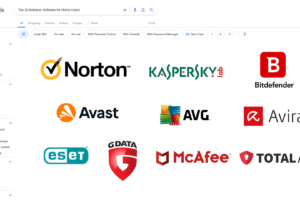The cloud has become an integral part of modern business operations, offering scalability, flexibility, and cost-effectiveness. However, as organizations increasingly rely on cloud-based services, the risks associated with cloud security have also grown. This article explores common cloud security risks and provides practical solutions to help organizations protect their data and applications.
Understanding Cloud Security Risks
- Data breaches: Unauthorized access to sensitive data stored in the cloud can lead to significant financial losses, reputational damage, and legal consequences.
- Data loss: Accidental or intentional deletion of data can result in operational disruption and loss of valuable information.
- Malware and ransomware: Malicious software can infect cloud-based systems and encrypt data, demanding a ransom for its release.
- Supply chain attacks: Compromised third-party vendors can provide attackers with entry points into cloud environments.
- Misconfiguration: Incorrectly configured cloud resources can expose sensitive data and create vulnerabilities.
- Compliance violations: Failure to comply with data privacy regulations can result in hefty fines and legal penalties.
Mitigating Cloud Security Risks
- Choose a reputable cloud provider: Select a cloud provider with a strong security track record and robust compliance certifications.
- Shared responsibility model: Understand the shared responsibility model between you and your cloud provider and ensure that you are fulfilling your obligations.
- Data encryption: Encrypt data both at rest and in transit to protect it from unauthorized access.
- Access controls: Implement strong access controls to limit access to sensitive data and applications.
- Regular patching and updates: Keep your cloud-based systems and applications up-to-date with the latest security patches.
- Network security: Use firewalls, intrusion detection systems, and other security measures to protect your cloud network.
- Data backup and recovery: Implement a comprehensive data backup and recovery plan to protect against data loss.
- Incident response planning: Develop a detailed incident response plan to address security breaches effectively.
- Employee training: Educate employees about cloud security best practices and the risks associated with using cloud-based services.
- Third-party risk management: Evaluate the security practices of third-party vendors and suppliers.

Specific Cloud Security Challenges
- Hybrid cloud environments: Managing security across multiple cloud platforms and on-premises infrastructure can be complex.
- Serverless computing: The ephemeral nature of serverless functions can make it difficult to implement traditional security measures.
- Container security: Securing containers and their underlying infrastructure is essential to prevent vulnerabilities.
- API security: Protecting APIs from unauthorized access and abuse is crucial for preventing data breaches.
Addressing Cloud Security Challenges
- Unified security management: Use tools and technologies to centralize security management across hybrid cloud environments.
- Serverless security best practices: Follow best practices for securing serverless functions, such as using IAM roles and policies and encrypting data.
- Container security best practices: Implement container security best practices, including vulnerability scanning, image scanning, and runtime security.
- API security best practices: Protect APIs with measures such as API gateways, rate limiting, and encryption.
Emerging Cloud Security Threats
- Artificial intelligence (AI) and machine learning (ML): AI and ML can be used to automate attacks and evade traditional security measures.
- Supply chain attacks: Attacks targeting cloud service providers and their supply chains can compromise the security of entire cloud environments.
- Cloud-native attacks: New types of attacks specifically targeting cloud-native technologies, such as serverless computing and containers.
Staying Ahead of Emerging Threats
- Continuous monitoring: Use security monitoring tools to detect and respond to threats in real-time.
- Regular security audits: Conduct regular security audits to identify vulnerabilities and assess compliance with security standards.
- Threat intelligence: Stay informed about emerging threats and trends in the cybersecurity landscape.
- Security awareness training: Provide ongoing security awareness training to employees to keep them informed about the latest threats and best practices.
By understanding and addressing cloud security risks, organizations can protect their valuable data and applications while reaping the benefits of cloud-based services. It is essential to stay informed about emerging threats and adapt your security measures accordingly to maintain a strong defense against the ever-evolving cloud security landscape.
















Add Comment